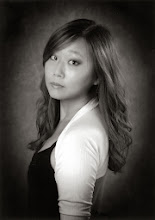
Perry Rubenstein Gallery: The Nature Show
by Victoria Kim
Richard Wood’s installation challenges the notion of traditional landscape genre through his modifying and abstracting of the natural elements found in landscapes; ironically, through such a challenge, Wood’s exhibition intertwines with the genre of landscape.by Victoria Kim
In The Nature Show, innumerable black lines empowered with vertical qualities are juxtaposed with the whiteness of the walls. However, such verticality is accompanied by occasional horizontal breaks and natural wood patterns, reminding the viewers of a hardwood floor. However, such reminder is not equivalent to an illusion; the black-and-white household gloss does not attempt to create the illusionism of real wood patterns. Further, one should also note that just as this household gloss cannot imitate the materiality of a hardwood floor, man-made wood panels cannot replace the naturalness of an actual tree, either. In other words, the wall functions like an artificial forest surrounding this contemporary gallery. Such a forest is abstracted to mere patterns, but one cannot help but using the word “forest” to describe these walls, not only because of the thrusting vertical lines but also due to the images of birds seated on the trees of this abstracted woodland. Even the concept of “wood panels” cannot sever its ties with nature and sublime landscapes although a sense of artificiality is imposed on such a concept — wood panels are man-made objects, but they are artifices rooted in nature. Despite the character of artificiality contained in both the appearance and the concept of these walls, one must refer back to nature and landscapes to describe their qualities.
The polychromatic column stands among the blooming orange flowers of the floor, piercing the ceiling. When observed from one perspective, this pillar is nothing more than a rectangular column with the same wood patterns of the walls echoed on its multicolored surface. Of course, the pillar would lose its significance if this column is observed as a separate entity; rather, the column’s placement should be considered in correlation with other elements of this installation to endow meaning to this object. Due to the deliberate and logical placement of the flower patterns on the floor, the viewer is subconsciously reminded of a tree standing among the flowered grounds. Although reduced to a mere rectangular column, this pillar refers back to an element crucial in traditional landscape paintings. Additionally, the polychromatic aspect of the column should also be considered. The various hues firstly remind one of a rainbow, another natural element found in Ruisdael’s famous landscape painting, The Jewish Cemetery. Secondly, the echoing of such colors in the images of the birds also bares significance; as the artist rhymes the colors with these free-spirited creatures, he is also playfully engaging with the wild and untamed qualities of the landscapes.
Woods does not declare himself as a member of Art Nouveau. The strict verticality and linearity found in Woods’ Nature Show is very contrasting to the free, curvilinear forms favored by Art Nouveau. Nevertheless, he took the organic motifs of Art Nouveau and abstracted them in his own terms, thus complicating the concept of nature as well as the genre of landscape. Still, however abstracted and reduced Woods’ installation may be, this complication forces a viewer to find correlations between his art and the landscape genre when he or she is faced with Woods’ peculiar world of abstractions.

I never noticed, but... wow, I am completely astounded by your writing style, the language and prose. I found myself unwittingly hanging on to each word, materializing these 2D images into something I could almost feel and breathe. Victoria, I am so impressed. (Well, aside from the fact that my literary ability has gone down the drain.) You have definitely become a beautiful writer. Keep it up!
ReplyDelete-Jennifer (your ex-roomie)